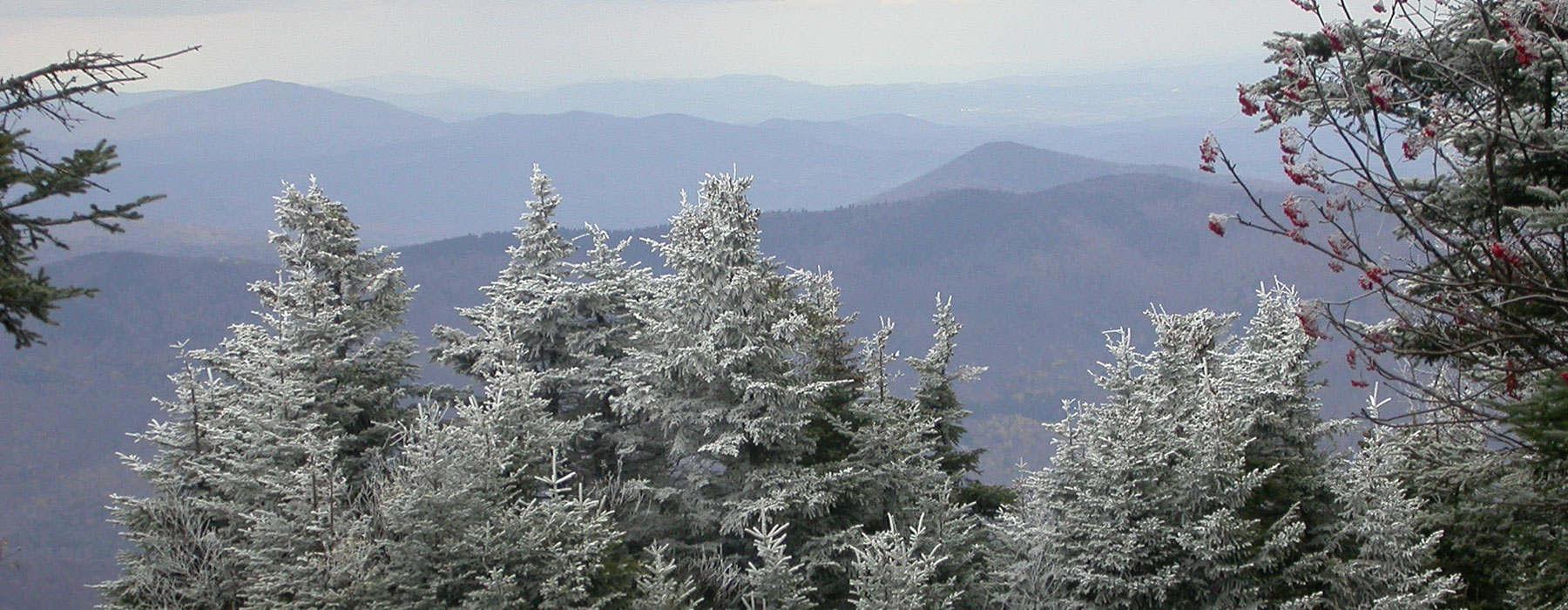Economically and ecologically important, Balsam Fir is a keystone species of the eastern North American boreal zone.
The Provincial tree of New Brunswick, Canada, it can form dense single species stands in some areas of northeastern North America, especially in the high mountains.
In the News
 September 03, 2014
September 03, 2014
Moving a Forest: As climate changes, ecosystems will need to shift
TNC is anticipating a day soon — within the lifespan of a tree — when a changing climate may make the forest unsuitable for some tree species and varieties that now live there. Projections for northeastern Minnesota predict warmer and possibly drier conditions — bad news for the boreal species such as white spruce, balsam fir, and paper birch that have defined the forest here for centuries. But a warmer, drier climate would likely make the area better suited for species such as oaks. more » November 04, 2014
November 04, 2014
Moose population threatens health of Cape Breton Highlands National Park forest
Matthew Smith, park ecologist with the Cape Breton Highlands National Park, said an overabundance of moose has been problem for some time in the park, with the animals browsing and eating away at seedlings and young trees. It's led to dramatic changes in the park's boreal forests, which are home to a wide range of animals, including species at risk like Bicknell's thrush, lynx and the American marten. more »Balsam fir is the emblematic tree of the eastern North American boreal zone. It is found from the Canadian Maritime Provinces westward to Lesser Slave Lake and the Athabasca River in Alberta and southward through New England and the Great Lakes to Pennsylvania. Isolated populations also occur in northeastern Iowa, Virginia, and West Virginia.
You can actually get an approximate age of a young tree without cutt. The main trunk and branches both grow one new whorl each year and whorls that are shed as the tree grows older leave behind characteristic scars that encircle the main trunk. Counting the number of whorls and whorl scars from top to bottom will give you an idea of just how old your tree is.
In New England Balsam fir can be found in the high elevation montane fir forest and in northern New England in lowland boreal forests of northern Maine, New Hampshire and the Northeast Kingdom in Vermont. Individual trees in subalpine populations reproduce at a later age and die earlier than lowland trees. Life is harder in the mountains.
High-elevation forests are often marked by “fir waves”. These are crescent-shaped bands of dead trees that you can see in systematic patterns across the sides of the mountains. The waves are areas of standing dead fir trees with healthy trees surrounding them.
Fir waves move very slowly over decades in the direction of the prevailing wind. Wind velocity at the edge of the tree canopy is over 50% higher than within the forest. Rime ice forms on the trees when water droplets in the air hit solid surfaces and immediately freeze. Rime accumulates more on trees exposed to wind.
Trees at the leeward edge of the canopy opening in the wave are exposed to winds and die from loss of needles and branches due to heavy ice accumulation. The rocking in the wind with ice loads also causes their fine rootlets to break underground. These rootlets are important for delivering nutrients to the tree. As these trees die, adjacent trees experience the same conditions and begin to die. The overall direction of the wave motion is therefore directly related to wind direction.
Regeneration of waves occurs at about 60 year intervals. As you move back from the dying front of trees the trees are older and older until you reach the following wave of dead trees. If you were to take time lapsed photography of a mountain side, the waves of dead trees would appear to be moving across the mountainside like a wave in the ocean.
Balsam fir cone crops in the Northeast generally follow a two-year cycle. Fir trees usually produce large cone crops in odd years and few or no cones in even years. A biologist in New Brunswick monitored Balsam fir for thirty years beginning in 1920. The two-year cycle only broke three times. More recently forest ecologists have recorded the same cycle across the mountains of New England and New York. Apparently, it takes the trees two years to sequester enough energy to produce seeds.
Cones grow on the trees in the spring and by August, if it’s going to be big crop (called mast), you can see the cones standing on the ends of tree branches like green candles. If there are lots of cones on the trees, the following year will feature White-winged Crossbills, Pine Siskins, and Red Squirrels in the mountains.
Red squirrel populations (and probably other small mammals like Red-backed Voles) rise dramatically in mast years and that spells disaster for summer nesting songbirds in the mountains like Bicknell’s Thrush and Blackpoll Warblers. Red Squirrels have a peak mating period from January to February. Females are pregnant for about 40 days and the young spend another 30 days in the nest before venturing out onto the family’s territory. In late summer the family breaks up and disperses. Just about the time the cone crop is gone and the songbirds are laying eggs, Red squirrel families are scampering in the trees. Red Squirrels and other small mammals have a taste for eggs and nestlings.
Not only is Balsam fir an economic powerhouse, but it is an ecological one too.

